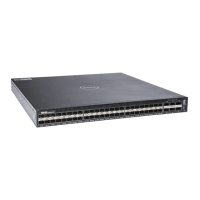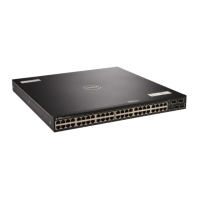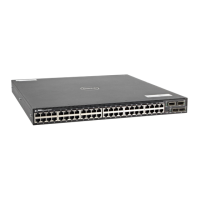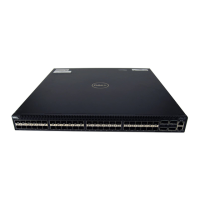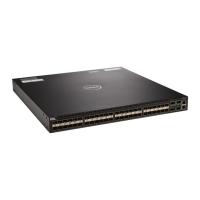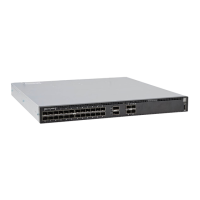Dell Networking OS Behavior: If you do not configure the dynamic option, the system does not detect
station moves in which a MAC address learned from a MAC-limited port is learned on another port on the
same system. Therefore, any configured violation response to detected station moves is not performed.
When a MAC address is relearned on any other line card (any line card except the one to which the original
MAC-limited port belongs), the station-move is detected and the system takes the configured the violation
action.
mac learning-limit mac-address-sticky
Using sticky MAC addresses allows you to associate a specific port with MAC addresses from trusted devices.
If you enable sticky MAC, the specified port retains any dynamically-learned addresses and prevents them
from being transferred or learned on other ports.
If you configure mac-learning-limit and you enabled sticky MAC, all dynamically-learned addresses are
converted to sticky MAC addresses for the selected port. Any new MAC addresses learned on this port is
converted to sticky MAC addresses.
To save all sticky MAC addresses into a configuration file that can be used as a startup configuration file, use
the write config command. If the number of existing MAC addresses is fewer than the configured mac
learn limit, any additional MAC addresses are converted to sticky MACs on that interface. To remove all sticky
MAC addresses from the running config file, disable sticky MAC and use the write config command.
When you enable sticky mac on an interface, dynamically-learned MAC addresses do not age, even if you
enabled mac-learning-limit dynamic. If you configured mac-learning-limit and mac-learning-
limit dynamic and you disabled sticky MAC, any dynamically-learned MAC addresses ages.
mac learning-limit station-move
The mac learning-limit station-move command allows a MAC address already in the table to be
learned from another interface.
For example, if you disconnect a network device from one interface and reconnect it to another interface, the
MAC address is learned on the new interface. When the system detects this “station move,” the system clears
the entry learned on the original interface and installs a new entry on the new interface.
mac learning-limit no-station-move
The no-station-move option, also known as “sticky MAC,” provides additional port security by preventing a
station move.
When you configure this option, the first entry in the table is maintained instead of creating an entry on the
new interface.
no-station-move is the default behavior. Entries created before you set this option are not
affected.
To display a list of all interfaces with a MAC learning limit, use the following command.
Display a list of all interfaces with a MAC learning limit.
EXEC Privilege mode
Layer 2 600
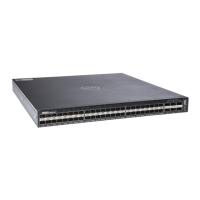
